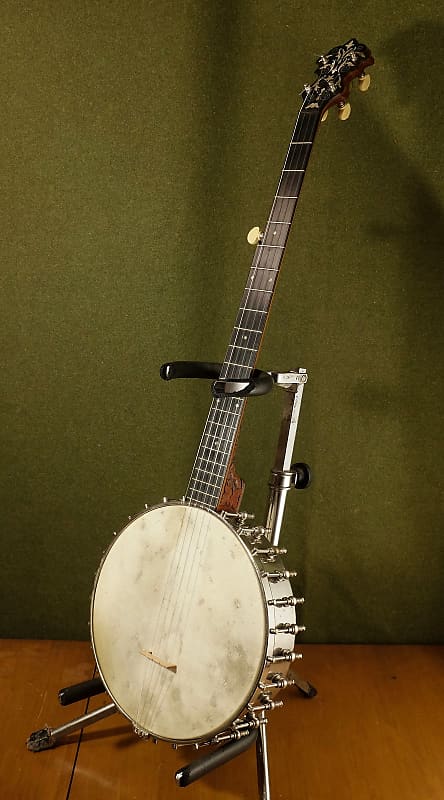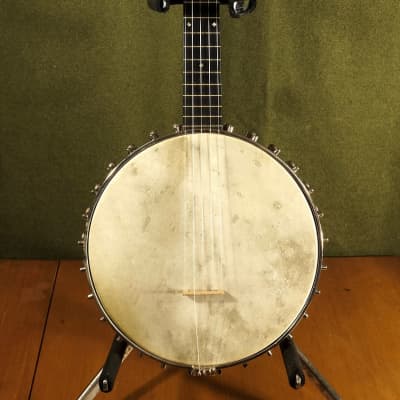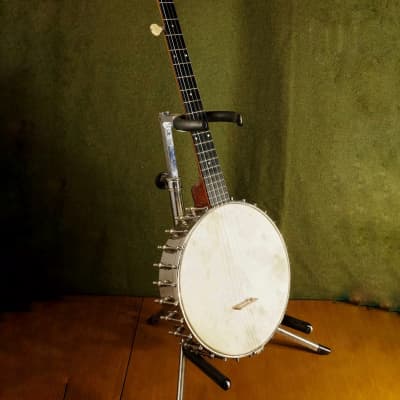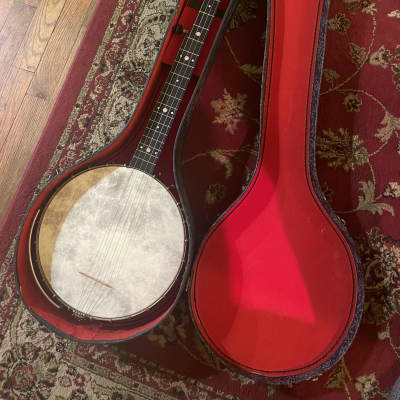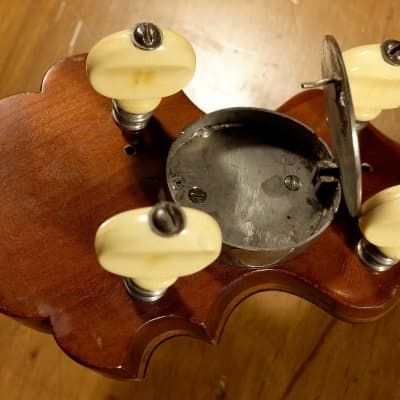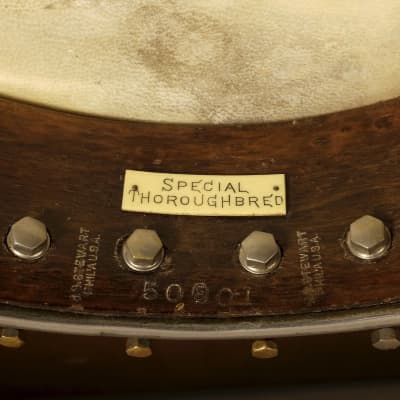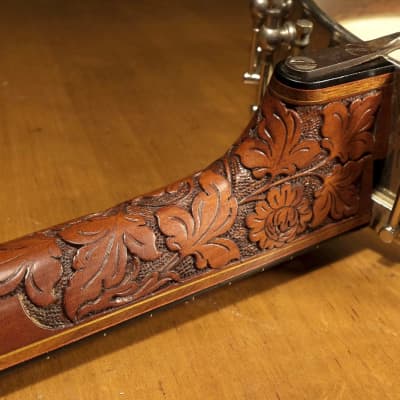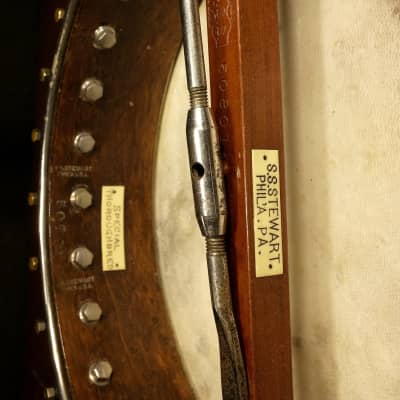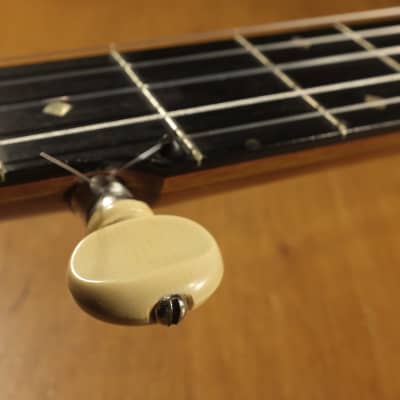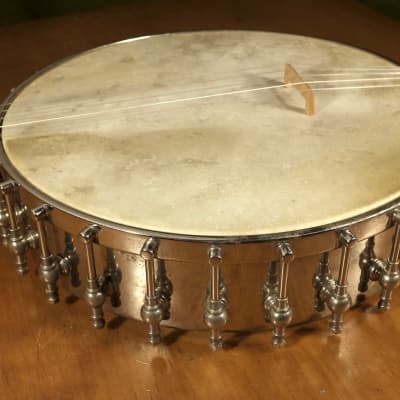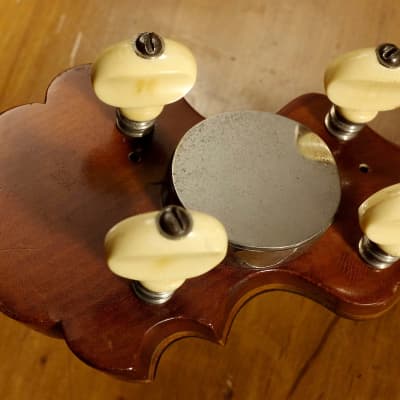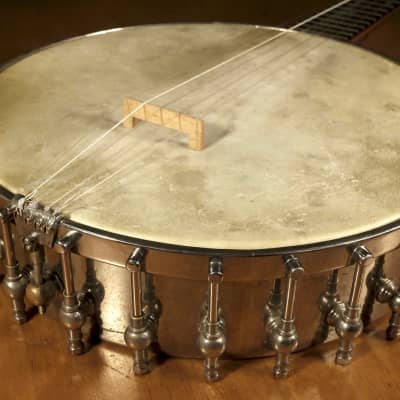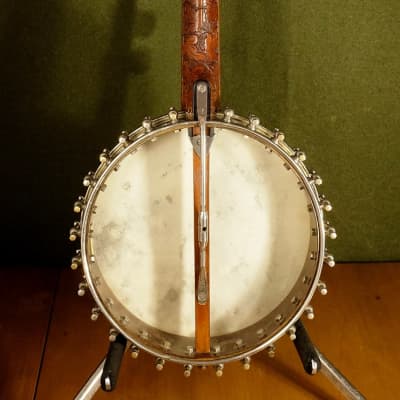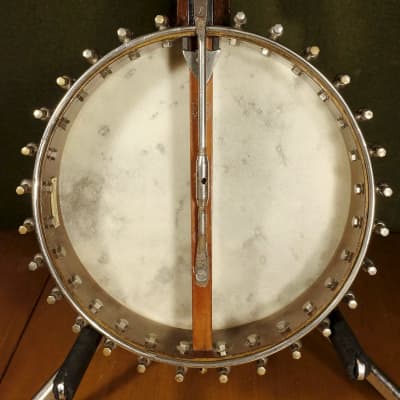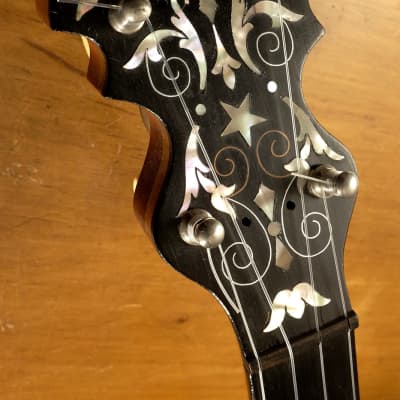I’m copying this from the ad from which I originally purchased this banjo. It says way more than I could type up myself. It is by far the most beautiful sounding banjo I have played and it’s been an absolute joy to learn on.
Heres what the experts said.
“This is a great--great--playing 1900 S.S. Stewart Special Thoroughbred banjo made in Philadelphia, PA. The cherry neck has a beautifully carved heel an a spun over, dark stained maple pot. This is a top tier professional model from one of the finest banjo builders in the history of the instrument. It has a 26.5" scale, and the action is 1/8" at the 12th fret--perfect. This Special Thoroughbred, like most Its, has a 10 1/2" pot, and the calfskin head appears to be original and is in great shape. The bridge is a 5/8" Bart Veerman X-2, with a new set of Labella 17 Classic Banjo strings--the best for Classic banjo style. I've also used light gauge steel strings with a 1/2" ebony topped bridge and this machine sings with those as well. I'll include a new set of light gauge strings and the 1/2" bridge I was using. The tuners work perfect and were an option from S.S.Stewart during the time that steel strings were becoming popular for banjos, so either works well depending on the sound you want. It included a pro quality open back hard shell case.”
The prior owner to me asked experts about this banjo and lists their initials and reviews here. Two of these folks are very familiar with this exact banjo, and all three are steeped in banjo history and S.S.Stewart history. Thank you guys. I have a good reason for posting their opinions on here, and I appreciate their input.
From B.S.:
This is a 1900 S. S. Stewart SpecialThoroughbred 5 string.
After S.S. Stewart died, the banjos manufactured by his former company changed a little. Most noticeably the peghead inlay went from the 30 pieces of pale abalone to a combination of 24 pieced of pale abalone and 10 pieces of German silver and copper wire. The ebony fretboard has a 26 1/4" scale and the spun over rim is 10 1/2". One remarkable detail on this banjo is the hardware looks like it came from Washburn as it has the ball shoes and nuts that Chicago manufacturer used. But the tension hoop has no grove or notches for the hooks to attach. Instead there are 28 lugs for the hooks to screw in. I guess they are not "hooks" rather head tensioners. Also, there is a 1 3/8" round box with a hinged lid screwed to the back of the peghead. There are 4 notches cut into the box that correspond to small holes in the peghead near the tuners.
Our only guess as to reason for this modification is a quick restringing apparatus. It didn't catch on, but is a great place to hide important items like plastic ants or breath mints. This banjo is in excellent condition and plays great with its original screw tension tuners.
From A.F.:
The nuts, shoes and shoe bolts are Washburn "Imperial" hardware. The rim has no imprint of the traditional Stewart shoes or shoe bolt washers, which implies that the Washburn hardware was installed at the Stewart factory. I've seen a handful of other Stewarts with non-Stewart hardware that appears original, so perhaps they occasionally bought from outside sources if they were short on their own hardware, or maybe it was a custom request. My theory on the metal box and holes in the peghead is the same... someone's idea for a quick-change string system. I suspect whoever made and added the box also made the tailpiece (which is not a casting, but is elements silver brazed together). I think the tensi setup is also homemade, likely by the same person who did the box and the tailpiece.
From J.H.:
Stewart was either dying or dead (likely dead) when this banjo was built.
The peghead overlay was either sourced from the same place R&L were getting theirs, or made by R&L. I presume part of George Bauer's firings included the inlay worker. One correction, the Special Thoroughbred was introduced in 1893 as the signature Farland model Special sized banjo with a three octave neck. In very short time, the Thoroughbred was offered in 11" with a three octave neck and also called a "Special Thoroughbred", though it was not Special sized. Later the "Special Thoroughbred" was also offered in 11.5". The Special model (sized as yours is) was designed to be pitched one step above standard C for more volume, brilliance and carrying power for stage solo work. So, there is no telling what the story is behind this one. It could be that a skilled machinist got parts from Stewart and Bauer and built it from there.
They could have gone to S&B with parts and told them what they wanted. It also could have been a prototype for a new model built by George Bauer's workers. The tailpiece looks like it is based on the A. G. Wood patent. I bet the "proper" way to string it would be to wrap the ends around the lower lug in the "no knot" method and let them pass through the upper lugs for alignment with the bridge. If you put on the first string last, it would be easy to replace with the large lug.
